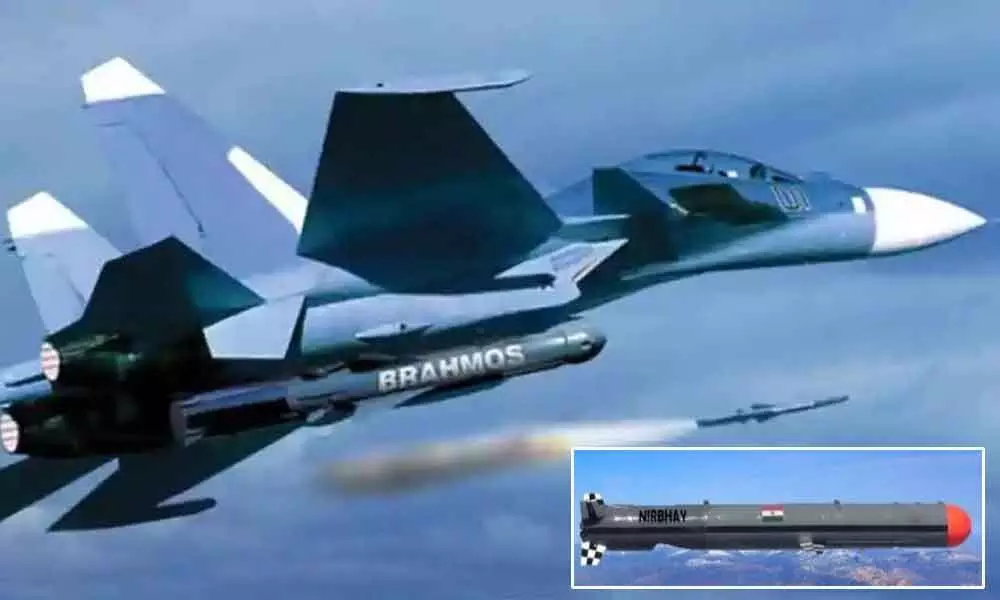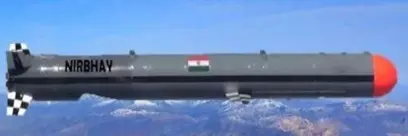BrahMos, Nirbhay, Akash : India deploys top missiles to tame Chinese threat

Nirbhay Missile (inset)

Nirbhay missile, developed by the Defence Research and Development Organisation, can reach up to 1,000 km and is capable of low-level stealth strikes on targets
New Delhi: In a major boost to India's long-range defence, the security forces have rolled out BrahMos, Nirbhay and Akash missiles to deter Chinese misadventures in eastern Ladakh, where the two countries are locked in a standoff.
The 500 km-range Brahmos cruise missile, 800 km-range Nirbhay cruise missile along with Akash surface-to-air missile (SAM) with a capability to target aerial threats 40 km away are at the core of India's stand-off weapon deterrence to People's Liberation Army (PLA) missile deployment in Xinjiang and Tibet regions.
While the PLA's western theatre command has deployed stand-off weapons up to 2,000 km range and long-range SAMs in Tibet and Xinjiang after the Ladakh stand-off, the supersonic Brahmos, subsonic Nirbhay as well as Akash have been deployed to counter them by India in the worst-case scenario.
India's main stay in the stand-off weapons is the Brahmos air-to-air and air-to-surface cruise missile with its 300-kilogramme warhead which can take care of airstrips in Tibet and Xinjiang, or a warship in Indian Ocean.
The Brahmos missile has been deployed in sufficient numbers in the Ladakh sector with the option to deliver the stand-off weapon from a Su-30 MKI fighter. Besides, the Brahmos can be used to create choke points in the Indian Ocean using the Car Nicobar air base in India's island territories. The IAF's Car Nicobar air base is the advanced landing ground for SU-30 MKI's which can use air-to-air refuellers to protect against any PLA warship threat coming from the Strait of Malacca to Sunda Strait across Indonesia, a senior government official said.
The surface-to-surface Nirbhay missile has a reach of up to 1,000 km. It is capable of low-level stealth strike on targets. It means it is capable of flying between 100 metres to four km from ground and pick up the target before engaging it.
The Nirbhay missile has been developed by the Defence Research and Development Organisation (DRDO) and has been in the testing for 7 years. This is Nirbhay missile's first deployment.
The third stand-off weapon used by Indian military is the Akash SAM, which has also been deployed in sufficient numbers to counter any PLA aircraft intrusion across the LAC in Ladakh sector. The PLA Air Force fighter activity in occupied Aksai Chin continues albeit at a reduced level. However, there is concern over PLA air activity across the Daulet Beg Oldi sector near Karakoram Pass.
The Akash missile with its three-dimensional Rajendra, a passive electronically scanned array radar that has the capacity to track 64 targets at a time and simultaneously engage 12 of them. The missile has the capacity to engage all aerial targets including fighter planes, cruise missiles and ballistic missiles.














